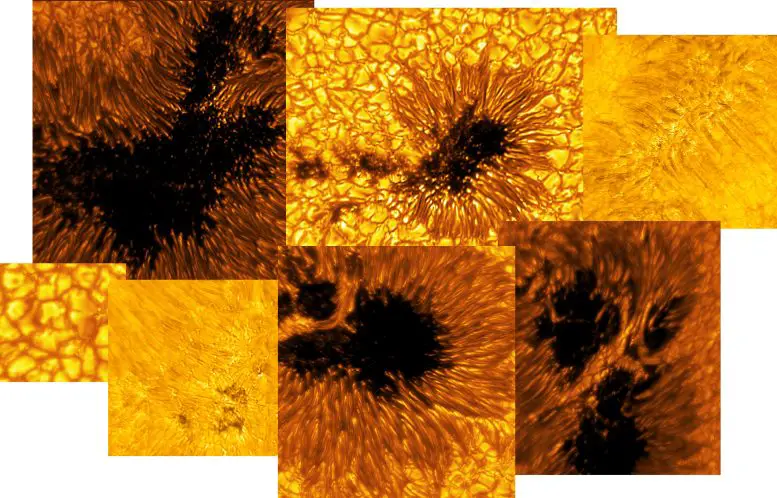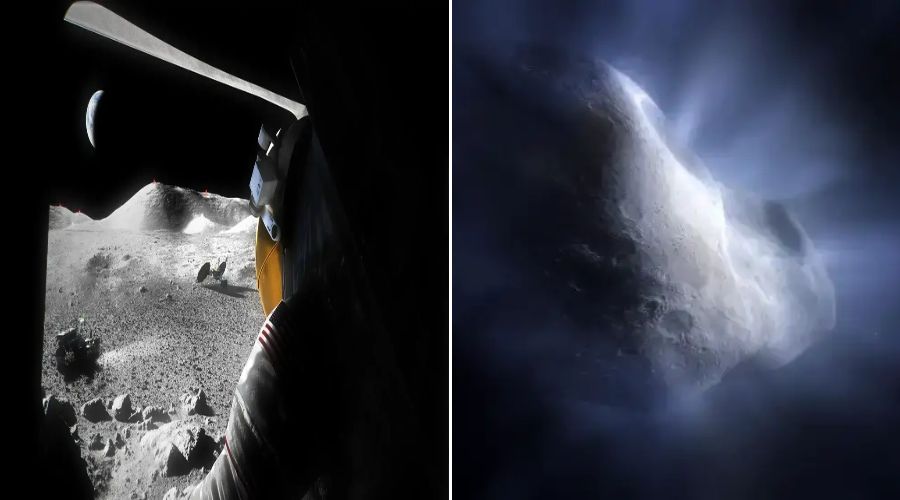
When a small, rocky world gets too close to an exceptionally active star, the planet can begin to evaporate, leaving it cloaked in a cloud of dust that also trails behind it, as seen in this artist’s concept.NASA, ESA, L. Calçada
Sometimes a planet wanders too close to its parent star, which causes the world to begin to evaporate. And for a brief period of time, it’s possible for astronomers to observe this act of cosmic filicide, revealing vital clues about how such planets form in the first place.
Astronomers don’t usually get a chance to crack open a planet and see what’s inside. With the exception of Earth — and to some small extent, the Moon and Mars — researchers instead rely on their knowledge of physics and theoretical calculations to guess what’s really going on beneath a planet’s surface
But sometimes a star does split open a planet for us.
NASA’s Kepler Space Telescope, launched in 2009 and decommissioned in 2018, surveyed tens of thousands of stars over the course of its mission. Among these stars, Kepler found three strange systems that featured an orbiting planet accompanied by a thick cloud of dust. All three of these planets orbited very near their host stars, leading astronomers to conclude they were seeing each star vaporizing its planet, turning it inside out before our very eyes.
But to better understand this extremely limited dataset, a team of astronomers recently developed a simulation that models how a planet can be vaporized by intense radiation from its parent star. The goal was to see how rare or common this catastrophic evaporation scenario is, as well as determine what researchers can learn from such incidents. The simulation setup included varying the host star’s radiation level, the planet’s size, its orbital distance, and the planet’s chemical makeup and composition.
The researchers found that, in general, when a planet gets too close to its host star, it rarely turns out well for the world. And the smaller the planet, the more rapidly things go downhill. The results, detailed on the preprint website arXiv.org, have been submitted for publication to Monthly Notices of the Royal Astronomical Society.
What does it take for a star to destroy a planet?
According to the new study, an evaporating planet must sit very near its star to experience radiation levels intense enough to tear the world apart. At such close-in distances, such a planet would almost certainly be tidally locked, with one side of the planet permanently facing the raging star. Being tidally locked to a star sets up a strange situation for a planet: One side will reach temperatures high enough to melt and vaporize its rocky material, while the opposite side will be so cold that water ice can form.
The researchers found that an evaporating planet experiences a competition between the natural cooling effect of the planet’s permanent night side and overheating from the star on the planet’s day side. Within just a few thousand years of wandering too close to its star, most of the planet solidifies from the cooling effect — except for a thin shell of magma that faces the star.
The researchers determined that all planetary evaporation takes place due to this thin shell of magma. And that creates a dusty cloud surrounding the planet, as well as a trail of debris behind it in its orbit.
In the most extreme case of a low-mass planet orbing near an intensely radiating star, the researchers found that such a planet is capable of completely evaporating before it has a chance to solidify, destroying the world within just a few thousand years. However, the much more common scenario is for the planet to suffer through billions of years of agony as its star slowly eats away at the planet’s dayside.
The researchers also determined that there is a relatively small window of time during which an evaporating planet is losing enough material for us to detect it. There must be a significant flow of evaporated rock to see, requiring higher temperatures and lower masses, but the planet also has to stick around long enough for us to observe its destruction.
How many evaporating planets are there?
The researchers were also able to flip the question around. Now that they knew the conditions necessary for an evaporating planet to be detectable, they could take the three known catastrophically evaporating planets found in the Kepler sample and use that to estimate the total number of small planets throughout the entire galaxy.
Normally, an instrument like Kepler is unable to detect planets the size of Earth and smaller. That’s because its technique for finding planets relies on detecting a tiny dip in the brightness of a star as its planet crosses in front of it from our point of view. If the planet is too small, the dip will be undetectable and the planet will remain invisible. So even though Kepler produced a treasure trove of thousands of exoplanets, we know that the survey is incomplete.
Armed with their calculations, the researchers estimated that for every star in the galaxy, there is roughly one small planet less than the mass of the Earth. Additionally, the researchers found that future observations, especially with the James Webb Space Telescope, will be able to perform detailed studies of the dust clouds around evaporating planets to determine what these dying world’s are made of.
source: https://www.astronomy.com/








